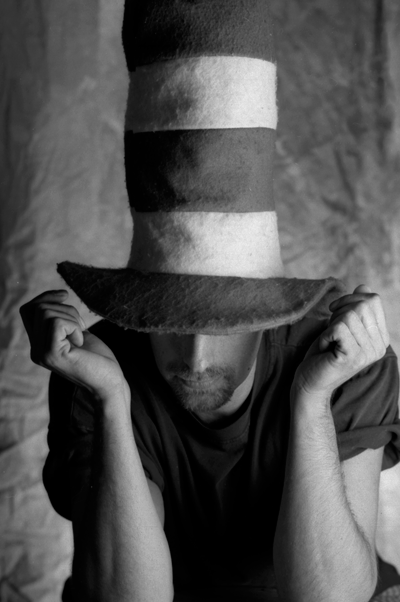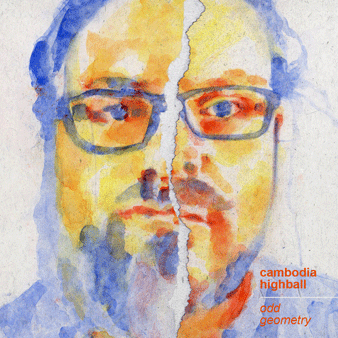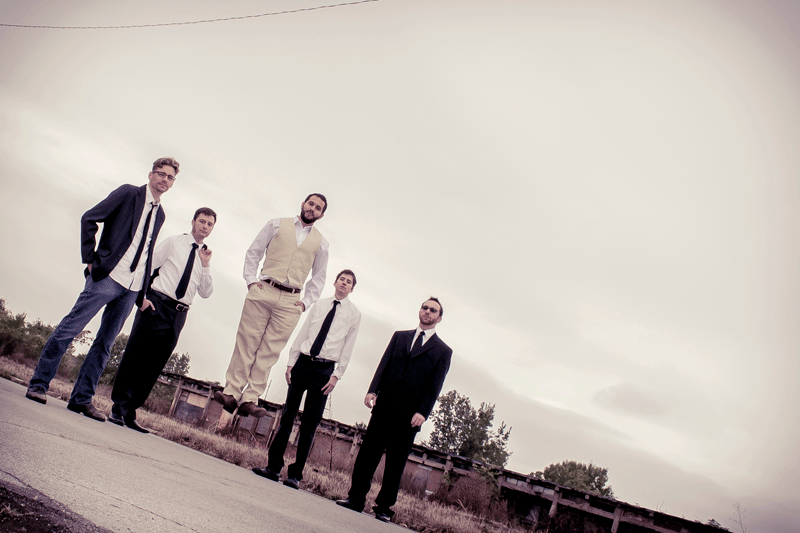On October 19, photography enthusiasts worldwide sat in front of computers streaming live feed from the premier international award for black and white photography, the Black and White Spider Awards. Broadcast from London, the prestigious awards were selected from over 9,500 entries representing more than 75 countries. Jurors included leaders in the field from institutions such as the Tate, London, Galerie Baudoin Lebon, Paris, and Art Stage, Singapore. As the names of accomplished artists were recognized, one artist in Fort Wayne was surprised to learn that his entry was among the most notable works. Rob Borel, a prolific Fort Wayne photographer, was recognized as a nominee for his piece titled, “Pas De Deux.” The piece illustrates a “duet of gracefulness” as a ballerina dressed in a cloud of white tulle drapes her body lovingly over the back of an elephant that appears to be rolling gracefully through a setting of urban decay. The photograph doesn’t make a clear statement, but rather ignites a stream of questions from the viewer. One might ask, how did they end up there? What has happened to these two? Where are they going now?
Through his journey of creating the piece, Borel learned of the abhorrent treatment elephants are subjected to, not only in circus environments but also in countries where elephants are revered. These magnificent, gentle giants are dominated by abuse in order to serve man. Borel began to question how human behavior could turn so dark. His questions led him to uncover a disturbing truth about the treatment of these animals. “Pas De Deux” offers a sense of peace and nurturing to a situation that is in reality dark and horrifying.
The balance of a delicate dancer upon a massive animal can at first be interpreted as contrast, but if one is inquisitive enough to investigate, he will quickly learn that the elephant, too, is light on its feet. Thus, the viewer is prompted to search for more similarities that might be represented in the work.
Borel’s artistic pieces generate more questions than answers. He himself is an artist who shoots out questions more than explanations during a conversation. When Borel hears a comment describing his work as being original, his brain reacts by posing a question in return.
“How do you know when a work is original? Everyone is influenced by what they have seen and the work of others. But your eyes aren’t going to see the work in the same way as the next person.”
Influenced by artists such as Man Ray, Edward Weston and Irving Penn, Borel’s work follows the same vein of curiosity as early surrealist work. Borel often shoots ordinary objects from unusual perspectives or sets objects in curious combinations. One can only assume that his creative process is filled with a continuous internal dialogue of inquiry streaming with an endless line of questions.
“Why is that isolated wall standing in a field?” Borel asked of a concrete structure that stood alongside I69 behind the old Seyfert’s potato chip factory. (The orphaned wall happened to be a remnant from an abandoned hotel construction project.) “What if I put a couch in front of that wall and take a photograph?” His work asks viewers to consider the ordinary with fascination and to also consider “what if” even a small part of ordinary life were to change.
While many people continue to condemn Fort Wayne for being a cultural wasteland void of artistic expression, Borel looks for inspiration in places that many of us pass dozens, even hundreds, of times. He finds tiny compositions that, when put to print, are intriguing and certainly worth a few moments of sustained staring and even pondering. He has photographed countless shots of urban decay throughout our city – not with the intent to throw up his arms in disgust, but rather to say simply, this exists; take a moment to stop and admire the crumbling concrete and brick.
Borel has created works that grip the viewer and wrap him in tension. He uses the nooks and corners of the main floor of his apartment building for background settings and has even ventured down to the basement where the boilers and furnaces live to shoot some unusual scenes. He has taken bits of the vacated Byron Health Center and created pieces heavy with anxiety that echo a hollow chill, even after leaving the viewer’s eye.
His artistic work tends to lean toward the dark side.
“I’m not consumed by the dark image, but I’m not afraid of it,” he says. Somehow, he is able to create pieces to which a viewer may instinctively comment, “This should scare the crap out of me,” but for some reason the images allow one to jump in and explore without running away screaming in terror. He presents images as if they were cut from a dream and veiled by a thin shield of mystery that tempts the viewer to look fear straight in the face.
Not all of Borel’s work is quite so mysterious or tense. Most of his camera career revolves around editorial, commercial or industrial work. He takes photographs of workers in action as well as functioning industrial equipment. Many area industries pepper their annual reports and advertising media with Borel’s work. He currently serves as the exclusive photographer for Northern Indiana Lakes Magazine where he shoots interiors and exteriors of multi-million dollar homes. Even on these assignments where the end goal may seem mundane for an artist, Borel’s brain still rolls out questions.
“How are these things made?” he asked of some locally produced tools. “Where did that come from?” he wondered about a piece of massive machinery. Questions of the ordinary world lead him back to his own world where art gives him the freedom to express whatever he so chooses.
Borel chose to pick up a camera when he was still in high school. As a student of the Regional Vocational Center, now the Anthis Career Center, he worked with just one other student in the photo lab. Each day they took pictures and developed film. Borel’s mother bought him a Nikon camera, and he set up his own darkroom in a bathroom at his house. He worked hard and he worked with intention. By the age of 17 he landed his first job working for a commercial photographer developing film. By 1987 he bought the business and has since been working as a commercial photographer.
Borel has witnessed the evolution of digital photography and photo manipulation. He worked with the very first version of Photoshop and remembers when the first pixel manipulation equipment cost $600 an hour to use.
“Now the technology is available on everyone’s desktop,” he says. He is quick to warn that technology doesn’t replace artistry.
“It’s a mistake to create an image based on technology alone. Having the knowledge to create a balanced composition and editing for correct lighting will never change. Digital manipulation is just a tool.”
He went on to point out that today the viewer can no longer accept a visual image as truth.
“The integrity of the visual image is lost. The honesty is gone. Visual proof is no longer proof. Photography has become an animation. There is reality attached but the image is rearranged to create an illusion.”
His point brings up an entirely new swell of questions which one can only assume Borel will investigate with thousands of camera shutter clicks. With his recent, honorable recognition from the artistic realm, Borel feels ready to strike out on a new adventure.
“I do feel good that the international world has recognized me,” he said. Over the past 40 years, Borel has been developing a body of work and has yet to devote time to finding a gallery home.
“Now I just have to put the feelers out there and see if anybody bites.”
When asked which type of work he preferred, Borel did not hesitate.
“If I had my choice of daily activity I’d choose to do the artistic work.” Perhaps he doesn’t realize that even his industrial photos reflect the eye of a seasoned artist.
 Submit Your Event
Submit Your Event


